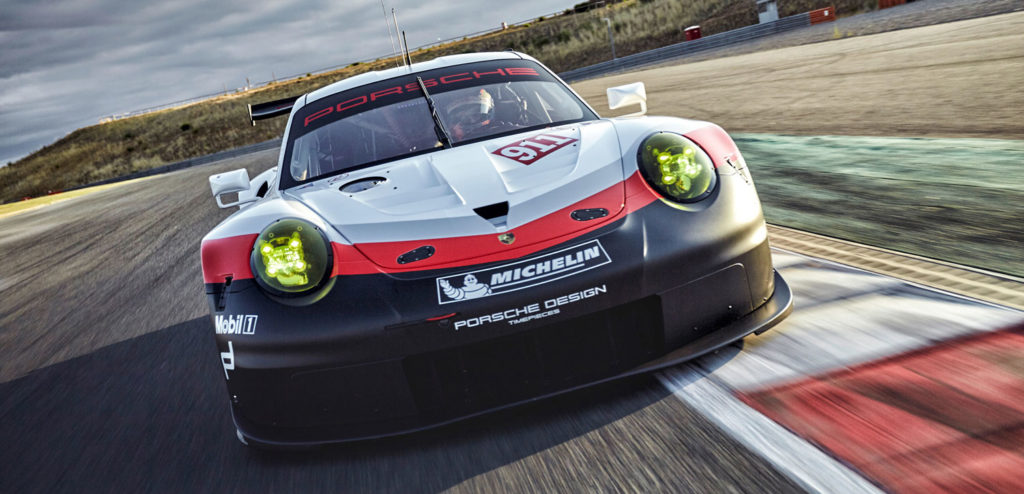German auto maker Porsche has detailed its 911 RSR following its run at the Circuit des 24 Heures du Mans in France. With four Porsche factory cars in the GTE Pro class and six professional customer teams in the GTE Am class each with an RSR, the OEM was well represented.
The current RSR, which is based on the 911 GT3 RS, has a steel chassis from the production line in Zuffenhausen, Germany —standard series production. Specialists at Porsche’s racing center then work on the car’s superstructure.
Many parts of the aerodynamically sophisticated body are made of lightweight carbon fiber, while a steel safety cell welded onto the body gives the race car greater stability and the driver protection.
The placement of the 510bhp naturally aspirated engine is no longer in the rear of the car but in front of the rear axle. This creates space for a larger diffusor, which generates downforce without any significant impairment of the aerodynamics.
This means the RSR can take curves even faster while the all-important drag at top speeds remains essentially constant. Additional downforce on the rear axle is generated by the top-mounted rear wing. This improves the aerodynamic efficiency.
The insights that Porsche gained under race conditions will soon be channeled into improving the car maker’s standard series models. The latest example is the 911 GT3 RS. A lot of expertise from the 911 RSR has flowed into its same-sized 4-liter, 520bhp naturally aspirated engine with RPM levels of up to 9,000.



